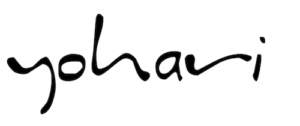An oriental collection of brooches and pendants
Sometimes, when I go to my atelier, sit at the table, and fiddle with beads, yarn, or polymer clay, or whatever I can lay my hands on, it’s with no clear plan or purpose. I can just play and enjoy and lose track of time while forgetting about the world around me. That’s how many of my pieces spontaneously came to life to be part of my eclectic collection, like the brooches and pendants I’m showing you here. They come with a brief tutorial on how I made them, based on some ‘work-in-progress’ photos, taken to remember the process and the steps.
One day I got the idea of making something colorful and oriental. There were a few blocks of old Sculpey III, not my favorite clay to work with, waiting for their turn to see daylight. For many polymer clay addicts, Sculpey III is not the most popular brand: while it is a good choice for the newbies to try out the material, it is not well suited for more complex and detailed pieces like miniatures or jewelry because of its notable fragility after baking.
Brooches and pendants from polymer clay
If you are at the beginning of your polymer clay journey and don’t have a lot of experience with the material, I highly recommend you do some research and reading. Believe me, it will prevent some disasters and tears because of a project ruined after many hours of work.
Here you’ll find a very helpful and comprehensive guide to different clay brands: ‘What’s the Best Polymer Clay Brand?’ by Ginger Davis Allman, the person behind The Blue Bottle Tree Or check out the section on the blog by Phyllis Cahill, where you will find the information on the extensive tests of polymer clay using various techniques and the inclusions.
To make the clay for your brooches and pendants stronger, I have added Cernit to it and, as a result, got a very good basis for further work. I applied gold leaf on the top and made an impression with a nice texture. For the surface treatment, I used different shades of alcohol ink. After the ink had dried, I slightly and gently stretched the veneer in different directions to create the crackles.

From the veneer, I cut a few shapes with cutters and also made some small fragments from the leftovers. These mosaic pieces were randomly arranged on the new backing sheet of black clay and slightly burnished together. Then I again cut different shapes with a cutter or in a free-form movement. Before baking, I added some decorative elements for that extra touch. You can use anything you like – rhinestones, small metallic or glass beads, details from old watches. Of course, as long as it can stand the baking temperature. Don’t forget about it and also about adding bakeable glue to enhance the bond between the pieces and clay.

After baking, I worked on the back sides of the pendants and brooches. To make them matchable with the shiny front sides, I used gold acrylic paint for surface treatment and added some rhinestones. Then the brooch was baked a second time. For the finish, I used UV-resin to highlight the metallic shine effect of the gold leaf.

You can find a lot of free tutorials on how to make brooches and pendants on the internet. Below are a few links that will be helpful in case you like to give it a try.
Here are the results of my work :-)
Let me know if this tutorial inspired you to make something similar! I am curious to see your creations :-)
 |
 |



